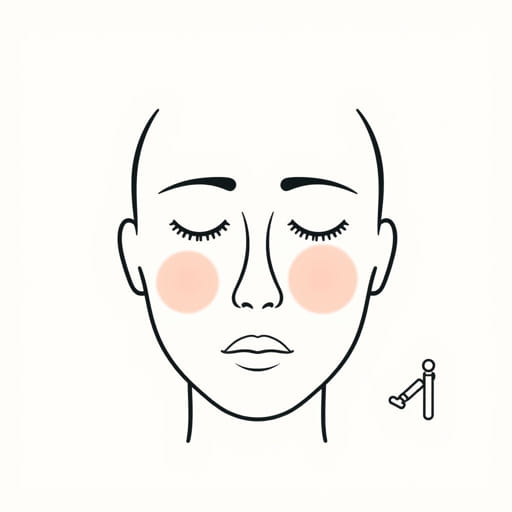Hemifacial spasm is a neurological condition that causes involuntary contractions of the muscles on one side of the face. These spasms can be intermittent or constant and often worsen with stress or fatigue. While medical treatments such as botulinum toxin injections or surgery are common, many individuals seek ways to manage or relieve symptoms at home. Understanding hemifacial spasm, its causes, and safe home treatments can offer relief and improve quality of life for those affected.
Understanding Hemifacial Spasm
What is Hemifacial Spasm?
Hemifacial spasm is a disorder involving the facial nerve, or cranial nerve VII. This nerve controls facial expressions, and when it becomes irritated or compressed, it can result in twitching or spasms. Unlike facial tics, hemifacial spasm typically affects only one side of the face and may progress over time.
Common Causes of Hemifacial Spasm
- Compression of the facial nerve by a blood vessel
- Facial nerve damage due to trauma or surgery
- Neurological disorders or abnormalities
- Stress and fatigue
Before beginning any at-home treatment for hemifacial spasm, it is essential to consult a healthcare provider to confirm the diagnosis and rule out more serious underlying causes.
Home Remedies and Lifestyle Adjustments
1. Warm Compresses
Applying a warm compress to the affected side of the face can help relax the facial muscles and reduce twitching. This is especially useful when the spasms are aggravated by cold weather or muscle stiffness.
- Soak a clean cloth in warm water.
- Wring out the excess water and place the cloth on the affected area.
- Leave it for 1015 minutes and repeat several times a day if necessary.
2. Facial Massage
Gentle facial massage can improve blood circulation and ease muscle tension. Use light pressure and slow, circular motions around the cheeks, jawline, and temples. Natural oils such as coconut or almond oil may help reduce friction during massage.
3. Stress Reduction Techniques
Stress is a known trigger for hemifacial spasm episodes. Incorporating stress-reducing activities into your daily routine can significantly help in managing symptoms.
- Deep breathing exercises
- Meditation and mindfulness
- Yoga or gentle stretching
- Spending time in nature
4. Sleep and Rest
Fatigue can worsen hemifacial spasms. Maintaining a regular sleep schedule and ensuring restful, uninterrupted sleep can make a noticeable difference. Avoid excessive screen time before bed and limit caffeine intake in the evening hours.
5. Proper Hydration and Diet
Staying hydrated and eating a balanced diet supports overall nerve and muscle health. Include foods rich in magnesium, potassium, and vitamin B complex, which are important for nerve function.
- Leafy greens (spinach, kale)
- Bananas and avocados
- Whole grains
- Fish and lean proteins
Supplements and Natural Remedies
Magnesium Supplements
Magnesium plays a critical role in muscle function and nerve transmission. Some people with muscle twitching or spasms benefit from magnesium supplements. However, dosage should be discussed with a doctor to prevent side effects like diarrhea or cramping.
Vitamin B Complex
B vitamins are essential for healthy nerves. Taking a B complex supplement may help support facial nerve health. In particular, vitamins B1 (thiamine), B6 (pyridoxine), and B12 (cobalamin) are linked to nervous system support.
Herbal Teas
Certain herbal teas, such as chamomile or passionflower, may help reduce muscle spasms and promote relaxation. Drinking a cup of herbal tea before bed can aid in calming the nervous system.
Facial Exercises and Physical Therapy
Daily Facial Exercises
Facial exercises may strengthen and retrain facial muscles, especially when practiced consistently. These exercises should be simple and gentle to avoid overstimulation.
- Raising and lowering eyebrows slowly
- Smiling and holding the position for several seconds
- Gently closing and opening the eyes
Physical Therapy Guidance
In some cases, working with a physical therapist who specializes in neurological or facial disorders can be helpful. They may provide tailored exercises and techniques to reduce spasm frequency and severity.
Avoiding Triggers and Irritants
Limit Caffeine and Alcohol
Both caffeine and alcohol can act as stimulants, potentially triggering facial spasms in sensitive individuals. Reducing or eliminating these from your diet may lead to improvement in symptoms.
Reduce Screen Time
Extended screen use can cause eye strain and fatigue, contributing to facial muscle twitching. Take regular breaks during computer or phone use, and adjust screen brightness to a comfortable level.
Protect from Cold
Exposure to cold air or wind can aggravate muscle spasms. When going outdoors in cold weather, cover the face with a scarf or wear appropriate clothing to stay warm.
When to Seek Medical Help
While many people find relief from mild hemifacial spasm symptoms at home, persistent or worsening spasms require medical evaluation. If you experience symptoms such as pain, facial weakness, or eye issues, consult a neurologist. In some cases, advanced treatment such as botulinum toxin injections or microvascular decompression surgery may be necessary.
Hemifacial spasm can be challenging, but home treatment strategies such as warm compresses, massage, stress management, and dietary adjustments can offer significant relief. Regular facial exercises and proper sleep also play an important role in managing the condition. Though home remedies are beneficial, they should complement not replace professional medical advice. Always monitor symptoms and consult a healthcare provider if you notice any changes or complications.
